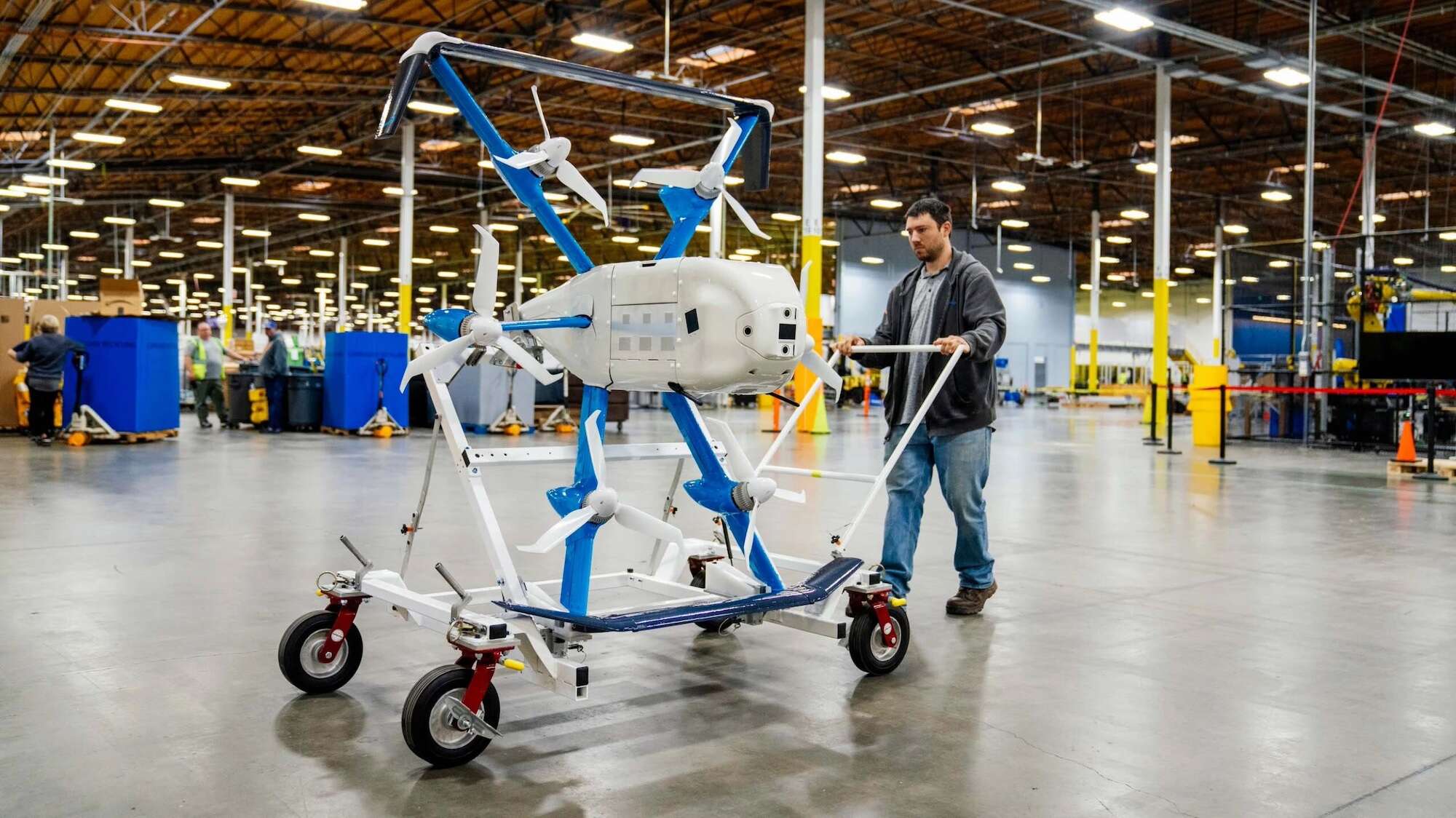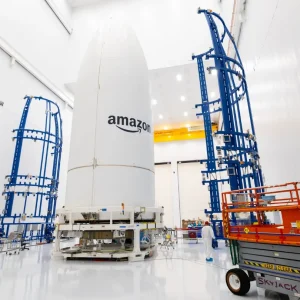
Amazon unveiled a fleet of new drones and robots that it says will help it “deliver the future” including the MK30 drone that will deliver commercial parcels in the UK next year. Experts warn that new geofencing and town planning policies will be needed before autonomous delivery and AI-driven logistics can become commonplace.
Amazon first revealed plans for drone deliveries in 2013 but progress has been slow, with a gradual rollout in limited locations in the US and test flights in the UK. Two years ago it laid off members of its Prime Air division, which had been tasked with making drone delivery a reality, but now appears to have had a change of heart and says it sees drone delivery and automation as the best way to meet growing customer demands.
The latest version of its drone, the MK30, has new custom-designed propellers that reduce noise by half and are lighter and smaller. This makes it safer for travelling in urban areas, something essential as the company expands its drone coverage. It can also fly twice as far as the previous M27 model, allowing it to reach a wider range of locations.
The UK and Italy will be the first locations outside the US to have drone deliveries, integrated fully into the Amazon delivery network. In the US customers will also be able to have medication delivered within an hour of ordering from Amazon Pharmacy. It will come via drone out of College Station, Texas.
Amazon also unveiled a humanoid robot called Digit with arms that can grab items. The company says it is designed to free up human employees “to better deliver for our customers”. It also claims its use of robotics and automation has created “hundreds of thousands of new jobs,” after unions expressed concern. “This includes 700 categories of new job types, in skilled roles, which didn’t exist within the company beforehand,” and Amazon statement said.
The company says its use of robotics, automation and AI vision technology helps to improve inventory storage and allocation. It is able to receive inventory at a site up to 75% faster using the technology than it can without it. This, Amazon says, benefits employees and allows them to deliver better customer experiences. Unions aren’t convinced, arguing that this will allow the company to reduce headcount and treat remaining employees poorly.
Stuart Richards, an organiser at UK union GMB told the BBC that Amazon had “been treating their workers like robots for years” and automation is part of a head-first race to job losses. He argued there had already been hundreds of fulfilment job losses and it would only increase with greater levels of automation.
Need for new rules and planning around drone delivery
For its part, Amazon says it has contracted researchers from MIT and Ipsos to assess how automation is impacting the work employees do and how to support them in their careers as automation continues to take more repetitive tasks from humans. Head of robotics for Amazon, Tye Brady told reporters during a briefing that people would always be a part of the Amazon fulfilment business, describing them as “irreplaceable”. When pressed on concerns from unions that this was Amazon removing humans from the equation he said “There is not any part of me that thinks that would ever be a reality.”
Paul Kostek, IEEE senior member, and advisory systems engineer with Base2 solutions told Tech Monitor that drone use for delivery and greater levels of automation would require a change in the way we live and manage our communities.
Drones have “the potential to transform industries on a wider scale,” Kostek says. “In time, they could be used to deliver organs for medical transplants and other vital medical supplies. This would mean expensive transportation methods would no longer be required, and working professionals would not have to worry about ground traffic. Essentially, drones could make delivery more reliable, at a lower cost, which is what we are beginning to see here.”
The engineer said there will be a need for city planners to also consider adding geo-fencing around certain areas, such as schools and parks to improve safety for citizens. This is a way to tell drone operators, including delivery companies, not to fly in this area. Signals are automated and sent to the drone itself. If it encounters a geofenced area it reroutes.
“Virtual boundaries may be administered around a geographical location which could be the size of a small building or an entire city where city planners can track who has entered or left the specified region,” says Kostek. “Integrating drones into a city infrastructure or everyday logistics and delivery will require planning and implementation of communication, control, command, and detection systems to support operations.”






